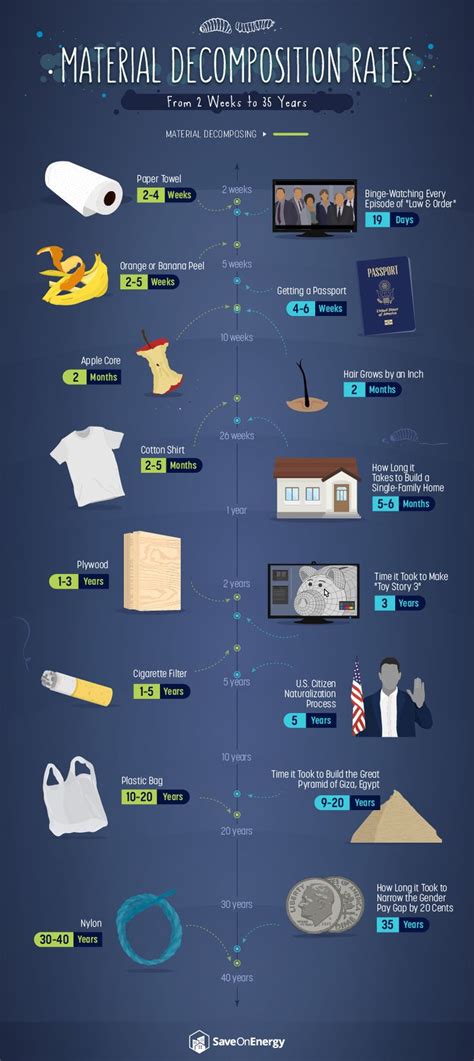Tackling Diaper Waste: Understanding Decomposition
Diapers. A ubiquitous symbol of parenthood, but also a significant contributor to landfill waste. While the convenience of disposables is undeniable, the environmental impact of millions of diapers ending up in landfills each year is a serious concern. Understanding how (or rather, how slowly) diapers decompose is key to appreciating the scale of this problem and exploring potential solutions. This article delves into the decomposition process of diapers, addressing common questions and exploring sustainable alternatives.
What are Diapers Made Of?
Before discussing decomposition, let's understand the composition of disposable diapers. They're a complex mix of materials, primarily:
- Absorbent Polymers (SAPs): These super-absorbent materials, often sodium polyacrylate, are crucial for holding liquid. They're designed to absorb many times their weight in water.
- Fluff Pulp: This wood pulp provides bulk and additional absorbency.
- Polyethylene Plastic: This forms the outer layer, providing waterproof protection.
- Other Additives: These might include dyes, fragrances, and other chemicals.
How Long Do Diapers Take to Decompose?
This is a tricky question, and the answer is: a very, very long time – potentially hundreds of years. The reason lies in the materials used. The absorbent polymers, while effective at soaking up liquid, are remarkably resistant to breakdown in landfills. The plastic outer layer further impedes decomposition, creating a barrier against moisture and microbial action necessary for natural breakdown. Even the fluff pulp, while biodegradable in theory, decomposes slowly under the anaerobic (oxygen-poor) conditions of a landfill.
Why Don't Diapers Decompose Quickly?
Several factors contribute to the slow decomposition rate of diapers:
- Anaerobic Conditions: Landfills lack oxygen, inhibiting aerobic decomposition processes that rely on oxygen-consuming bacteria.
- Lack of Moisture: While diapers contain absorbed liquids, the overall environment in a landfill can be surprisingly dry.
- Chemical Composition: The polymers and other additives are specifically designed to be resistant to degradation.
Can Diapers Be Recycled?
Unfortunately, most disposable diapers are not currently recyclable through standard municipal recycling programs. The complex mix of materials and the presence of potentially hazardous substances make recycling challenging and expensive.
Are There Biodegradable Diapers?
Yes, there are biodegradable and compostable diaper options available on the market. These diapers often utilize plant-based materials and are designed to break down more quickly under the right conditions (usually industrial composting facilities, not home composting). However, it's important to note that even these diapers may not decompose completely in landfills.
What are the Alternatives to Disposable Diapers?
Reducing diaper waste requires exploring alternatives, including:
- Cloth Diapers: Reusable cloth diapers offer a sustainable and environmentally friendly option.
- Biodegradable Diapers: As mentioned above, these offer a more sustainable disposable option, but composting is typically necessary for proper breakdown.
How Can I Reduce My Diaper Waste?
Beyond switching to alternatives, consider these tips:
- Proper Disposal: Follow local guidelines for diaper disposal. Some areas have specific programs for diaper recycling or disposal.
- Reduce Consumption: Carefully consider diaper size and change frequency to minimize waste.
- Support Sustainable Brands: Choose diaper brands that prioritize sustainability and use environmentally friendly materials.
What is the impact of diaper waste on landfills?
Diaper waste significantly contributes to landfill volume, taking up valuable space and extending the lifespan of landfills. The non-biodegradable components remain in landfills for centuries, contributing to pollution and environmental degradation.
Are there any government initiatives to reduce diaper waste?
Many governments and municipalities are beginning to explore initiatives to reduce diaper waste, such as promoting composting programs, incentivizing the use of cloth diapers, and supporting research into biodegradable materials. However, widespread, effective solutions are still being developed.
This exploration of diaper decomposition sheds light on the environmental challenges associated with disposable diapers. While complete elimination of diaper waste is a complex undertaking, understanding the decomposition process and exploring alternative options empowers individuals and communities to make more informed and sustainable choices. By embracing reusable alternatives or opting for biodegradable options and supporting responsible disposal practices, we can significantly reduce the environmental footprint of diaper waste.

